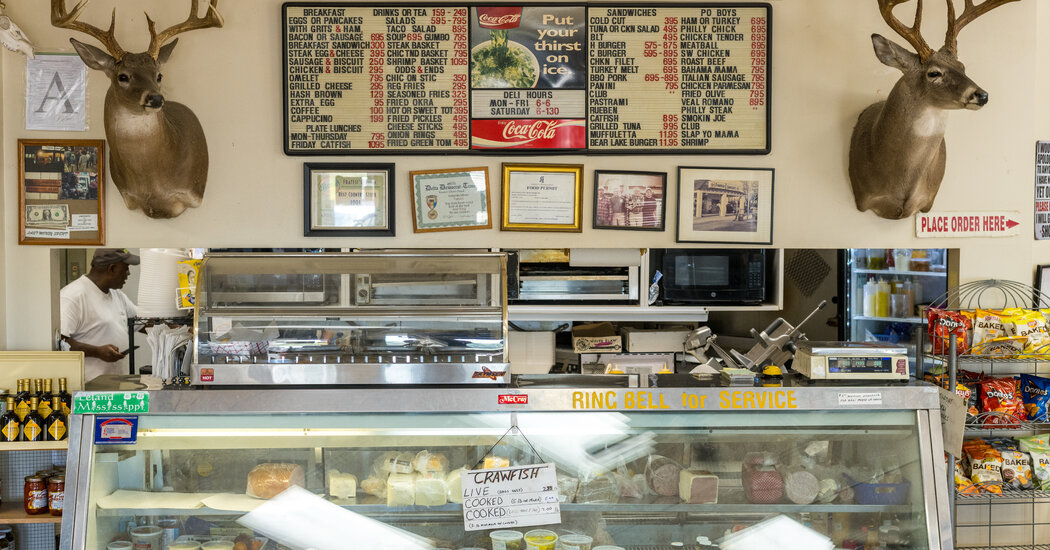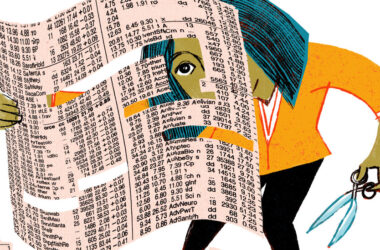New York City has its bodegas. The South has its gas stations.
When you stop for motor oil in Mississippi, you can also grab fried chicken on a stick. In North Carolina, you can buy a steamy bowl of pozole along with batteries and a five-pound bag of White Lily flour.
There might be shawarma next to the shotgun shells, or wedges of mild hoop cheese and packets of saltines for sale at the counter along with lottery tickets and pecan pie that the owner’s sister made.
Documenting these independent Southern temples of commerce and community has become a singular focus for the photojournalist Kate Medley, who, like most kids raised in Mississippi, grew up eating at rural gas stations.
Now living in Durham, N.C., Ms. Medley, 42, has spent more than a decade collecting images for her book of photographs, “Thank You Please Come Again,” which the digital magazine The Bitter Southerner published in December. The book began with a journalist’s curiosity, but ended up as a way for a daughter of the Deep South to make sense of the beautiful, brutal, complicated place she came from.
“These places hold great mystery,” she said. “You’re rolling down the road and they catch your visual attention. Then you wonder what’s behind that glass door when you hear that little bell ring. Is it the MAGA South? The welcoming South? Who’s at the cash register? Who’s at the grill?”
A dozen years ago, Ms. Medley discovered a Citgo in Durham that had become a Nicaraguan place called the Latin America Food Restaurant. She developed a theory.
“I thought I could chart the emerging immigrant foodways of the South by way of what was happening in the backs of these gas stations,” she said.
Some independent gas stations are fading in the fluorescent light of chains like QuikTrip and RaceTrac, with their cheap gasoline, hot-dog rollers and endless banks of soda machines. Some station owners let the gas pumps run dry or remove them altogether because the local economy is too depressed. Other gas stations have become churches or nightclubs, or have been abandoned altogether.
The book opens with an essay by the Southern writer Kiese Laymon, who grew up in a very different part of Jackson, Miss., than Ms. Medley. She didn’t know him when she reached out, but he understood her project immediately.
“I’d never thought about the fact that my favorite restaurants, as a child, as a teenager, as an adult returning to Mississippi, nearly all served gas,” he writes. “And I never, ever, thought of them as gas stations that served food.”
He tells the story of childhood trips to Jr. Food Mart in Forest, Miss., on Friday nights. His grandmother’s boyfriend, Ofa D, would slip in a Tina Turner tape and drive them in his pickup. They’d order a box of dark-meat chicken, a foam container of fried fish and a brown paper sack filled with the fried potato wedges everyone in Mississippi knows as potato logs.
It dawned on Ms. Medley that you could study a region by way of its food in 2005, when she landed at the University of Mississippi in Oxford, where she began a master’s program in Southern studies.
Hurricane Katrina hit the day after she started. She spent the next several months traveling the state to cover the devastation for The New York Times, her journeys fueled by rural gas stations.
They often run on a Southern “get ’er done” attitude. If customers want cakes, someone will start baking. A cashier in North Carolina figured out that she could make a little extra money buying some Bojangles sausage biscuits on her way to work, marking them up and selling them to the breakfast crowd.
“It’s just this ingenuity and resourcefulness you don’t find other places,” Ms. Medley said.
That’s particularly true for some gas stations run by immigrants. Ms. Medley shot images of Nina Patel and her samosas at Tasty Tikka, inside a Shell station in Irmo, S.C., and Gina Nguyen holding a garlic butter shrimp banh mi at Banh Mi Boys, which opened in a family-owned Texaco in Metairie, La.
Two weeks ago, Ms. Medley took me to a place in the middle of Mississippi Delta farmland that also sprang from an immigrant story.
Mark Fratesi’s father opened Fratesi Grocery and Service Center in 1941 in Leland. It’s a wonderland of homemade pork rinds, pantry staples and bait, with a freezer full of frozen steaks and bags of unshelled pecans. It runs on the honor system. You tell the cashier what you had for lunch. If you’re local, you can put your groceries or gas on a tab.
The restaurant takes up about half the building, and the family’s Italian immigration roots are all over the menu. There are grits and burgers, but also a rigatoni plate lunch and a po’ boy (their own invention) made with deep-fried balls of chopped black olives, shredded mozzarella and seasoned breadcrumbs bound together with a little mayonnaise and ranch dressing. Canvas-wrapped logs of seasoned, salted pork loin called lonza cure in the beer cooler.
Mr. Fratesi, 68, doesn’t think the place will last much past his retirement. Already, a chain gas station down the road has undercut his gasoline prices by a dime. And no one in the family’s next generation is interested in taking over.
“You have to be married to it,” he said.
About 15 miles away in Indianola, the future is brighter.
Betty Campbell, 69, and her husband opened Betty’s Place in a former gas station, about 20 years ago. The restaurant is about two blocks from the BB King Museum. Like her mother, Ms. Campbell was a regular cook for the bluesman and his crew, turning out a playlist of reliable Southern standards like sweet potatoes, baked chicken and caramel cake.
The restaurant walls are covered in the signatures of tourists from around the world who have come to learn about the blues. The family recently covered up the old garage bays, and are expanding the dining room to make room for the growing busloads of tourists.
Her younger brother, Otha, who is essentially the maître d’ at Betty’s, said they like to disavow travelers’ preconceived notions about racism in the South.
“Not only do Black travelers see Betty’s as a safe place to stop for lunch,” he told Ms. Medley for her book, “white travelers see it as safe place, too.”
Small Southern towns remain informally segregated, but not at the gas stations that sell food — or the restaurants that sell gas.
“There’s something about the accessibility and this coming together in a space the whole community shares almost out of necessity or at least convenience,” Ms. Medley said. “All are welcome every time, no matter what.”




